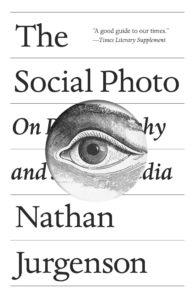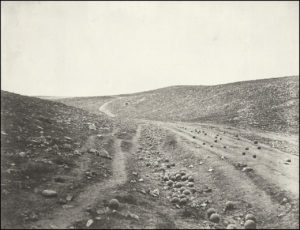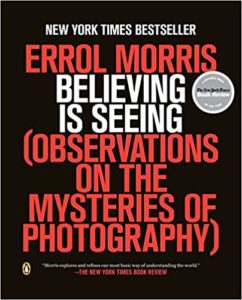When Roger Fenton took his camera to cover the Crimean War in 1855 the limits of the technology at the time meant that he was unable to photograph any scenes of combat.
Today, as war rages in Ukraine, we need only open our smart phones to release a flood of posts that show the war unfolding in near real time.
But this immediacy is not the most revolutionary aspect of how the world is seeing Russia’s war of aggression.
What is new to this war is that we are seeing it through the eyes of the participants including, and most groundbreaking of all, through the eyes of soldiers fighting on the frontlines.
A First-Person War
As war meets social media, this has become the first war to be told largely in first person.
It is both revolutionary and evolutionary. In this century, we have become used to witnessing news events through the smartphone videos of participants and bystanders. That is not new. It was inevitable that young men and women who have grown up using smartphones to share every aspect of their lives would take their phones with them to war.
In fact, it is so deceptively evolutionary that it takes some reflection to realize just what a revolutionary change this is. Imagine if the GIs landing on Omaha Beach had been posting their invasion live or if American soldiers under fire during the Tet Offensive had been sharing the attacks on social media.
As with all social media, these narratives are personal and generated from the ground up.
Social Media Meets War Coverage
Professional photographers lost control of most photography long ago. The market for those who continue to practice photography as a profession continues to shrink. With everyone carrying a camera in their pocket, fewer and fewer people feel the need to pay a professional.
But war photographs and videos had, until Ukraine, remained primarily the purview of professionals. It was too difficult and dangerous for anyone other than professionals to cover a war. Access to the front is limited and photojournalists who are “embedded” with troops need the permission of military commanders.
 In his 2019 book, The Social Photo: On Photography and Social Media, Nathan Jurgenson drew a distinction between the traditional use of photographs as documentation and what he termed social photography.
In his 2019 book, The Social Photo: On Photography and Social Media, Nathan Jurgenson drew a distinction between the traditional use of photographs as documentation and what he termed social photography.
The photography of past wars has been squarely in the documentary realm. In that regard, though the technology has changed, the path that war photographers followed since 1855 was straight and unbroken.
But, Jurgenson points out that most photographs (and videos) produced today are meant as social images, taken with the primary purpose of being shared. They may document events but that is not their primary purpose. Rather their main purpose is to share an experience.
Jurgenson described social photography as a cultural practice, as a way of seeing, speaking and learning. For Jurgenson, the importance of social photography (and social videography) is not the image but instead, sharing the experience.
Documentation from the Ground Up
War, with its minute-by-minute life and death consequences is the ultimate experience.
Today’s social photos and videos taken by the front-line participants have shattered the separation that existed between the participant and the documentarian.
When a soldier posts a video shot with a smart phone or a head cam or they take a feed from the screens used to target their missiles, there can be no doubt that what we are seeing actually happened. He or she is no detached bystander, but a participant who is at risk of death – and who is doling out death to others.
Their accounts may not be objective, but they are certainly authentic. And, like other social photos and videos, the purpose is to share the experience.
Ukrainian soldier taking off his boots after 5 days in trenches pic.twitter.com/7BnuYGF0M2
— Dmitri (@wartranslated) November 26, 2022
These Videos Tell Us About Ukraine’s Military
The fact that these soldier-shot videos not only exist, but that they are routinely posted, is remarkable.
Is it an intentional outgrowth of Ukraine’s adoption of a diffuse structure that enables field commanders to make and implement strategic decisions without getting bogged down in a rigid command structure?; or is it just an unavoidable reflection of going to war with a generation of men and women used to sharing every aspect of their lives?
That’s a bit of a chicken or the egg question. What we can assume, though, is that Ukraine’s military command has chosen not to fight the inevitable social media documentation of the war. It may not be a conscious decision by commanders, but it is an inevitable result of the smart phone generation going to war and taking their phones with them.
The Significance of Soldier-Produced Photojournalism
Without taking anything from the importance of professionally-trained journalists who, at least in theory, try to retain a degree of objectivity, there are ramifications to a military where front line soldiers will, I expect in all future conflicts, be narrating their own stories.
The stories are fascinating and addictive. I have watched the choreographed precision of artillery crews loading and firing round after round. I’ve seen drone operators silently searching out enemy tanks. I’ve looked through the eyes of night-vision-wearing snipers hunting down enemy troops. I’ve watched HIMARS crews target and destroy enemy positions and then slip away before they can be located.
The immediacy is unprecedented. On the day Kherson was liberated, phone videos from soldiers and civilians alike recorded the first Ukrainian troops entering the city and the spontaneous reactions of the citizens who had waited for months for their city to be liberated.
A Personalized War
The posts personalize the conflict. As Ukrainian troops advance and liberate villages, dozens of videos record the spontaneous reactions of residents greeting Ukrainian soldiers. Women rushing out of their homes to kiss the men advancing on the roads. Children and teens in tears as they hug soldiers. Men smiling and offering congratulations. They give lie to the Russian claim that this is a war of liberation.
Documented War Crimes
There are heartbreaking videos of villagers showing soldiers where their loved ones were killed…the basements where they were held and beaten…the anger in the eyes of those who survived atrocities and the pain they show for those who didn’t.
In the coming years, war crime investigators and prosecutors will have mountains of visual evidence that will make it impossible for any commander or collaborator to deny their culpability.
Bands of Brothers
It is striking how many of the videos are genuinely funny and how happy so many of the Ukrainian soldiers appear. They post cooking videos. Videos of dogs and cats they have adopted on the front. There are videos of birthday celebrations and weddings on the front.
There are videos of tanks and troop carriers racing down rural roads. There are grisly videos of roadways strewn with dead bodies left behind by fleeing occupiers. Poignant videos of soldiers reunited with relatives who endured months in occupied cities.
But war is about fighting. It is about killing the enemy and trying not to get killed. The videos take us inside trenches under fire, where the soldiers do not know if they will survive until the next day. At times it can be surrealistic, as when a soldier, whose unit is under heavy fire, stops to give the camera a tour of his trench as though narrating a video on a home improvement channel.
Watching these videos of young men facing death feels as though we are reaching across 700 years. This is what the men on St. Crispin’s Day in Agincourt must have felt listening to King Henry declare, “…we in it shall be remembered —we few, we happy few, we band of brothers…”
War is hell. And, Vladimir Putin is putting two countries through hell for no purpose. That is being documented in real time and depth that has never before been seen. No amount of propaganda will be able to cover up the reality of this war, including its crimes.
Regarding the Pain of Others
We often justify the depiction of war by linking it to a higher, pacifistic purpose. Hoping that by showing what war is actually like, we will discourage future wars. But that is little more than a convenient rationale.
 In her last book, “Regarding the Pain of Others,” Susan Sontag dove deeply into the history and import of war photography and exploded the myth. She explored the futility of justifying the depiction of war by linking it to a higher, pacifistic purpose. The common argument that we can discourage future wars by showing scenes of war is a lie.
In her last book, “Regarding the Pain of Others,” Susan Sontag dove deeply into the history and import of war photography and exploded the myth. She explored the futility of justifying the depiction of war by linking it to a higher, pacifistic purpose. The common argument that we can discourage future wars by showing scenes of war is a lie.
Scenes of dead soldiers strewn about the battlefields of the Civil War, did nothing to stop World War I. Graphic photographs of soldiers maimed in the first world war did nothing to stop the second. Photographs of World War II, the Korean War, Vietnam and every war since, did nothing to dissuade Putin from invading Ukraine and unleashing a war of criminal cruelty on civilian populations.
Sontag did not believe that war coverage can ever convey the realities of war. She writes that those of us who have never experienced war first hand can never “get it.”
“We truly can’t imagine what it was like. We can’t imagine how dreadful, how terrifying war is; and how normal it becomes. Can’t understand, can’t imagine. That’s what every soldier, and every journalist and aid worker and independent observer who has put in time under fire, and had the luck to elude the death that struck down others nearby, stubbornly feels.”
“And they are right,” says Sontag.
You Can’t Understand Something that Cannot be Understood
The soldier-produced videos and photographs may bring us a little closer to understanding. But, mostly they prove Sontag’s point about how “normal” war becomes.
Jurgenson points out that social photos are not meant to explain or even ask for understanding.
Which makes social photos particularly suitable for a war that has no explanation or understanding. If all wars are irrational, this one is among the most irrational. It has been a long time since we have witnessed a war that so clearly has heroes and villains.
Social media is an experiential medium. We use it to show our friends where we have been…what we have eaten…who we have seen. Is it any surprise that when these young men and women go to war, they continue to speak to their families and friends, sharing experiences just like every social media user today, except that their shared experience involves killing invaders and trying to avoid being killed.
I am Here and This is How it is
They are saying, “I am here and this is what I am doing. I am alive and I am fighting because war came to us and this is what we must do. And, here is something I found interesting.”
Our work is also to deploy mechanized bridges over rivers or destroyed bridges.
Do you wanna try driving through our bridge?🤪 pic.twitter.com/KoNXweTHMm
— Максим (@kms_d4k) November 12, 2022
These stories, that we can now access in the palm of our hand, do not ask us to oppose this war. If they carry any message, it is that they intend to see this war through to its end. They are fighting back against a bigger, more powerful enemy that only wants to destroy. These soldiers did not invite a war, but they will not walk away from it.
This war has no reason other than the imperial ambitions of an autocrat. It cannot be understood.
And so, in the absence of understanding, they are simply showing us, in first person and in real time, how it is.
And, that is the most revolutionary aspect of this new way of seeing war in first-person.
War photography began in Crimea
If you trace the history of war photography to its beginnings you will find yourself in Crimea in 1855, when British photographer Roger Fenton, on assignment from the publisher Thomas Agnew & Sons, spent four months photographing the conflict that pitted Russia against British, French and Turkish forces.

We have come full circle, with war again raging in Ukraine, including Crimea. And, just as Crimea gave birth to war photography nearly 170 years ago, Ukraine is changing how the world sees and experiences war.

The First War Photographs
Roger Fenton’s photographs lacked one thing – the action of war. The laborious requirements of wet plate photography in the 1850s precluded Fenton from taking photos of battles. Wet plates had to be prepared immediately before taking a picture, inserted into the back of the camera and exposed before the emulsion could dry (thus the term “wet” plate).
Lenses were slow and the emulsions were not very light sensitive. Subjects had to either hold still or be inanimate. In addition, the equipment was so cumbersome that Fenton required a specially equipped and modified wagon for transport and storage.
Still, his images fascinated audiences. To a world that had relied on the subjective interpretations of sketch artists and painters this new way of seeing was revolutionary. For the first time, audiences could see the real thing. Even if what they saw was mostly staged camp photos and the geography of the war, they knew that they were looking at the real places where it had happened and not an artist’s imagined scene.
The Shadow of Death
The most famous of Fenton’s photographs, “Valley of the Shadow of Death” is actually two pictures. One, generally considered to be the first image, shows a road with cannonballs scattered across a small hill on the left and clustered about the ditch next to the road. The presumed second image shows essentially the same scene but this time with the cannonballs scattered throughout the roadway as well.
Because of the differences between the pictures and because Fenton presumably scattered the canon shot in the roadway to make for a more dramatic second image, some have criticized him for staging the iconic photo.
Believing is Seeing
In his 2011 book, Believing is Seeing (Observations on the Mysteries of Photography), documentary filmmaker Errol Morris took a deep dive into the images in hopes of determining which came first. As one might expect from an Academy Award-winning director of documentaries, Morris doggedly pursued the truth. Morris’ determination doesn’t just border on obsession. He rushes headlong into it.
It’s clear that Morris had hoped to prove that Fenton’s image of the roadway scattered with cannonballs was actually the first exposure. However, as he followed the evidence (and he went to great lengths to uncover that evidence), it became clear to him that the most likely sequence was the one that is generally accepted – that is, that the cleared roadway was shot first and the cannonball cluttered roadway, second.
Fenton’s detractors may feel vindicated, but Morris concludes (as I do) that knowing the answer does not negate the significance of Fenton’s vision.
Fenton brought the war home
There is no record that Fenton ever attempted to conceal the origins of the second photo or even that any contemporary bothered to ask. It is unfair to judge Fenton by today’s standards when he lived in an era when war imagery was left up to the creative and often fanciful interpretation of sketch artists, illustrators and painters.
Fenton saw and photographed the real place – the location where British soldiers faced such fierce volleys of artillery that they had named it the Valley of the Shadow of Death. And, for one of the first times in history, anyone could see a photograph of the actual place where men fought and died in war.
Coincidentally, the Crimean War was a turning point for the Russian Empire, which would not recover from its loss for decades.
Exploring the nature of photography in war
Morris’ book, by the way is far more than just the single essay on Fenton’s photographs and is well worth reading by anyone willing to think deeply about truth and photography.
Morris explored the nature of truth in photography through a series of six essays. Five of the essays focused on the complex relationship between photography and wars. Each is thought provoking and well worth the read.
The book includes challenging essays on Abu Ghraib, a thoughtful dive into the repeated use of children’s toys in the foreground of photographs from war-ravaged cities (a prop that has become a cliché) an a look at the “photography and memory” from the Civil War.
Buy Believing is Seeing (Observations on the Mysteries of Photography) on Amazon.
